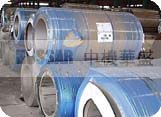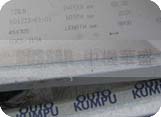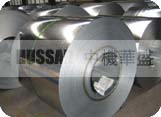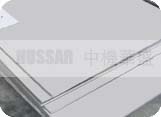| Hussar Machinery Equipment Import & Export Corp. |
|
|
| Home | Brief | Products | Materials UNS | Standard | Order Style | On Stock | Service |
| Inconel 625 Alloy(UNS N06625) Alloy 625 (UNS N06625)
is an austenitic nickel base superalloy possessing excellent resistance to oxidation
and corrosion over a broad range of corrosive conditions, including jet engine
environments and many other aerospace and chemical process applications. The alloy
has outstanding strength and toughness at temperatures ranging from cryogenic
temperature to 2000F (1093C). Alloy 625 also has exceptional fatigue resistance. Specs:
625 (UNS N06625) Alloy 625 (UNS N06625) is an austenitic nickel base superalloy possessing excellent resistance to oxidation and corrosion over a broad range of corrosive conditions, including jet engine environments and many other aerospace and chemical process applications. The alloy has outstanding strength and toughness at temperatures ranging from cryogenic temperature to 2000F (1093C). Alloy 625 also has exceptional fatigue resistance. Alloy 625 derives its strength from the solid solution strengthening effects of molybdenum and columbium on the nickel-chromium matrix. These elements also contribute to the alloy's outstanding corrosion resistance. Although the alloy was developed for high temperature strength, its highly alloyed composition provides a high level of general corrosion resistance to a wide range of oxidizing and nonoxidizing environments. The levels of chromium and molybdenum provide excellent resistance to chloride ion pitting, and the high level of nickel provides resistance to chloride stress corrosion cracking. The material possesses a high degree of formability and shows better weldability than many highly alloyed nickel-base alloys. The alloy is resistant to intergranular corrosion even in the welded condition. Alloy 625 can be produced by vacuum induction melting or AOD refining. Consumable electrode remelting procedures may be used to further refine the material. ----------------------------------------------------------------- Applications Standards ----------------------------------------------------------------- Chemical
Analysis C
Mn P S Si Cr Ni Mo Columbium + Ta Ti Al Fe ----------------------------------------------------------------- Corrosion
and Oxidation Resistance Oxidation
Resistance ----------------------------------------------------------------- Formability ----------------------------------------------------------------- Welding ----------------------------------------------------------------- Heat
Treatment
Impact
Resistance |
|
Add:E2 Room 2317,Yuan Chen Xin Office Building,No.12 YuMin Road,ChaoYang District,Beijing,China,100029 Copyright 2010JING ICP No.10051934-1










